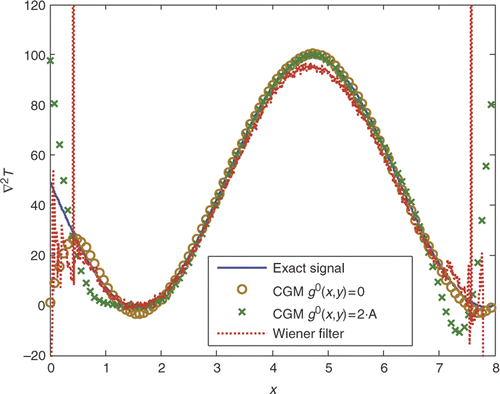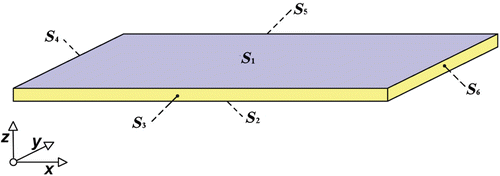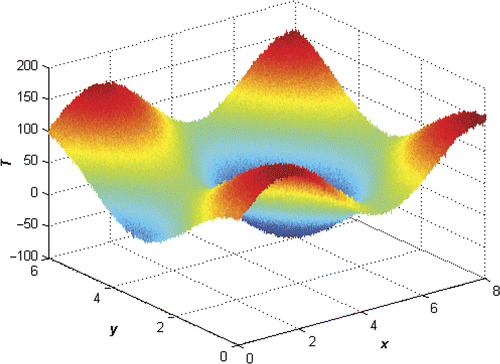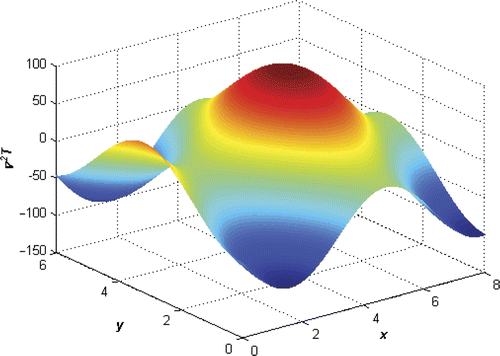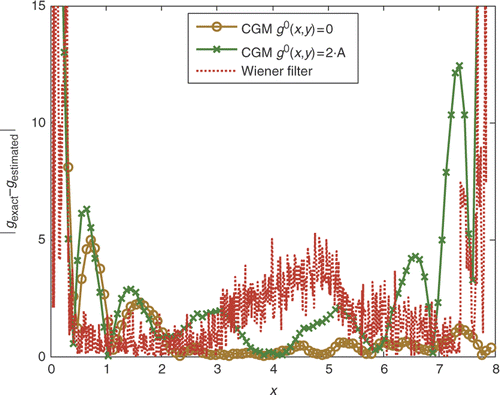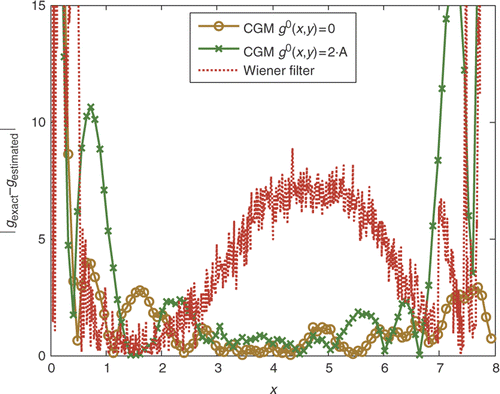Figures & data
Figure 4. Exact and noisy test signals and signal's Laplacian along the domain centreline for the case A = 50, dx = dy = 0.001 m and σ/A = 2%.
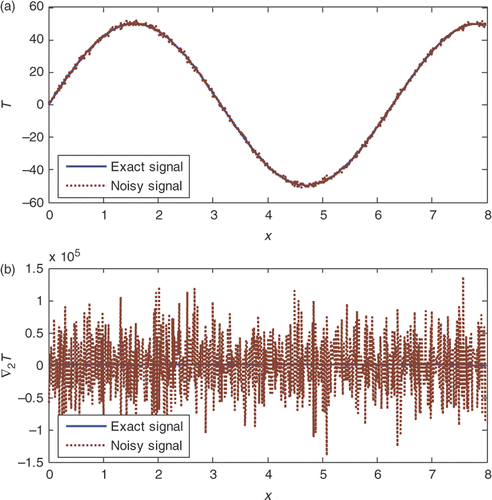
Figure 5. Objective function J* and estimation error during iteration number for the case A = 50, dx = dy = 0.001 m and σ/A = 2%.
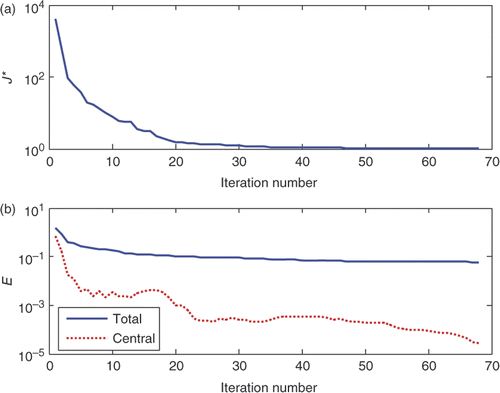
Figure 6. Objective function J* and estimation error during iteration number for the case A = 50, dx = dy = 0.001 m and σ/A = 6%.

Figure 7. Exact and reconstructed signal and signal's Laplacian along the domain centreline for the case A = 50, dx = dy = 0.001 m and σ/A = 6%.
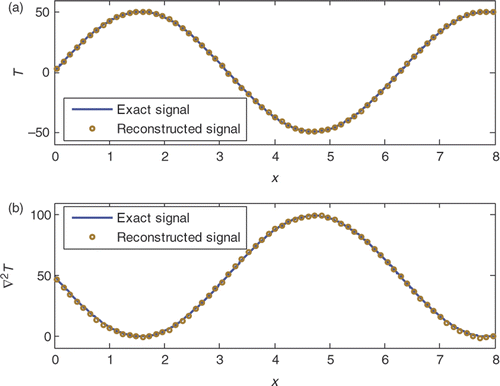
Figure 8. Exact and reconstructed signal's Laplacian, along the domain centreline, obtained by the CGM with two different initial guess of the unknown function and by the Wiener filtering technique for the case A = 50, dx = dy = 0.001 m and σ/A = 2%.
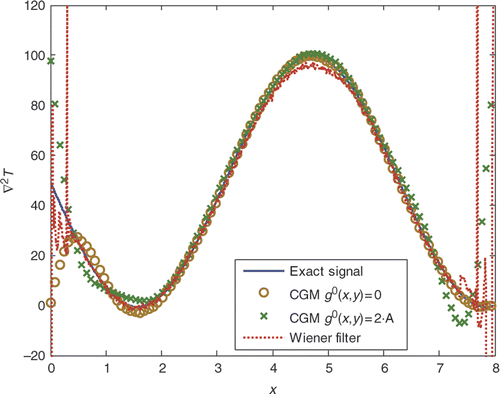
Figure 9. Exact and reconstructed signal's Laplacian, along the domain centreline, obtained by the CGM with different initial guess of the unknown function and by the Wiener filtering technique for the case A = 50, dx = dy = 0.001 m and σ/A = 6%.
